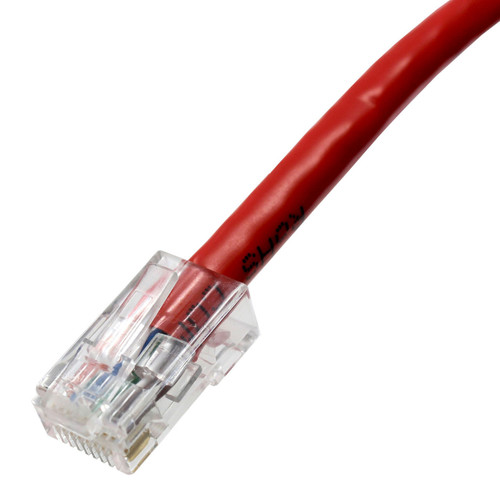Patch Cable, Cat6, RJ45-RJ45, Non-Booted, 24AWG, Stranded, Unshielded Twisted Pair, 568B, Gray Jacket
Step out of the limitations of Cat5 Ethernet, and into the stability of our Cat6 Ethernet Patch Cables, which bring you 10 Gigabit Ethernet at 250MHz. These cables are RoHS compliant and 550MHz rated. Choose from a variety of colors to match the requirements of your networking configuration, all available in packs of 10.
Among the advantages of Cat6 over Cat5 are crosstalk prevention, which keeps outside signal noise from causing interference. Not only do you get the most up-to-date technology with Cat6, but it is still backwards-compatible with Cat5 and Cat5e applications. Perhaps the greatest benefit of Cat6 is that it is an incredibly affordable, low-cost upgrade.
Features
- Backward-compatible Cat5, Cat5e and Category 3 cable standards
- Allows two-way communication in each pair of wires (a previously unavailable feature in Cat5e)
- Connect 2 computers directly
Shaxon Category 6 patch cables feature stranded wire for repeated flexing and movement without micro-cracking of the copper. Our cables use a short body plug design that minimizes de-twisting of the pairs during the manufacturing process, assuring the highest available performance and employ a flush boot that allows the cables to fit side by side in high density patch fields.
- 0.25in cable OD
- CM rated jacket
- Flexible, stranded 24 AWG UTP
- short body plug design
- Superior bend radius
- 550MHz
CATEGORY 6
Category 6 cable, commonly referred to as Cat 6, is a standardized twisted pair cable for Ethernet and other network physical layers that is backward compatible with the Category 5/5e and Category 3 cable standards. The cable standard provides performance of up to 250 MHz and is suitable for 10BASE-T, 100BASE-T, and 1000BASE-T for distances of up to 100 meters, and 10GBASE-T for distances up to 55 meters.
Slim and Ultra-Slim patch cables will perform best at lengths of under 50 feet.
CABLING STANDARDS
Network cabling standards are used internationally and are published by ISO/IEC, CENELEC and the Telecommunications Industry Association (TIA). Since 1995, solid-conductor UTP cables for backbone cabling is required to be no thicker than 22 AWG and no thinner than 24 AWG, or 26 AWG for shorter-distance cabling.
POWER OVER ETHERNET (POE)
POE describes any of sever standard or ad-hoc system which pass electric power along with data on twisted pair Ethernet cabling. This allows a single cable to provide both data connection and electric power to devices such as wireless network components, IP cameras, and VoIP phones.
The IEEE standards for PoE require category 5 or greater cable or better for high power levels but will allow using category 3 cable if less power is required.
WARNING: Slim and Ultra-Slim patch cables are not rated for Power Over Ethernet.













